SUMMARY
This is AI generated summarization, which may have errors. For context, always refer to the full article.
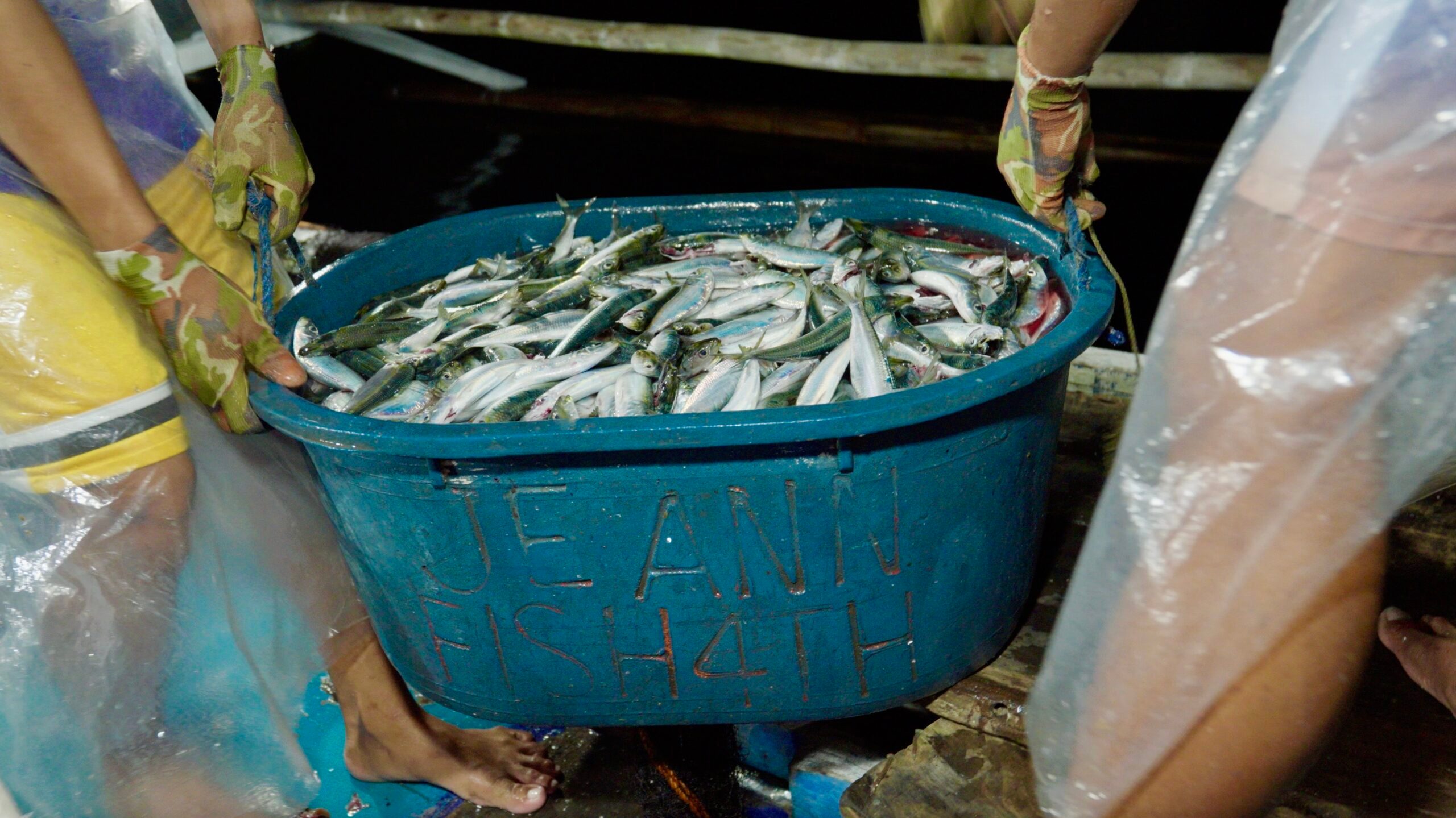
First of 2 parts
NORTHERN SAMAR, Philippines – At around 5 pm on a clear Friday in October, a crew of seven municipal fishermen from San Vicente, Northern Samar, prepared for a trip to catch sardines.
The crew members brought plastic containers of gas onboard, preparing for hours of work that would go late into the night.
The crew set sail while the sun was setting. By the time they reached their usual fishing spot, the sun was already gone. This particular boat was designed for sardine fishing, equipped with a generator and seven bulbs of white light. There were white lights in the distance as well – their competition for the depleting sardine population in their town.
With their lights on, the fishermen gathered to lower their net into the water. The large pile of net on board that took up most of the front deck disappeared into the water within two minutes.
And then they waited.
The sardines are attracted to the lights, crew leader Ronelio Bulan told us. When he earns enough money, he’ll invest in underwater lights.
Despite the loud generator, Bulan and some of his crew curled up to take a nap while they waited for their catch. It was their second trip of the day, the first starting at 3 am, before the sun even came up, because that’s when the fish came out. After the morning trip, they returned to shore with only around 10 kilograms of different kinds of fish.
That Friday evening, their focus was on sardines, which the multi-island town of San Vicente is relatively bountiful of, compared to some towns in mainland Northern Samar. The crew had gone out for sardines for the past three days with hardly any catch. This time, they hoped for better luck.
By 7:30 pm, the fishermen pulled up a small portion of the net to feed the 12 people on board. They prepared it two ways – by smoking the fish on a charcoal clay pot stove they brought on board, and kinilaw, where the raw meat is splashed with vinegar and topped with onions and tomatoes. Served with packed rice, dinner could not have been fresher than this, energizing the crew to pull up the rest of the net later.
An hour after, the crew formed a line and put on gloves and sheets of plastic wrapped around their waists and legs.
The silver, iridescent scales of hundreds of sardines illuminated just below the surface of the water as the crew removed the net from the sea. They pulled up the net, removed the fish one by one, and dropped them into tubs for three hours – even longer than when the net had been under the water.
Finally, a good day.
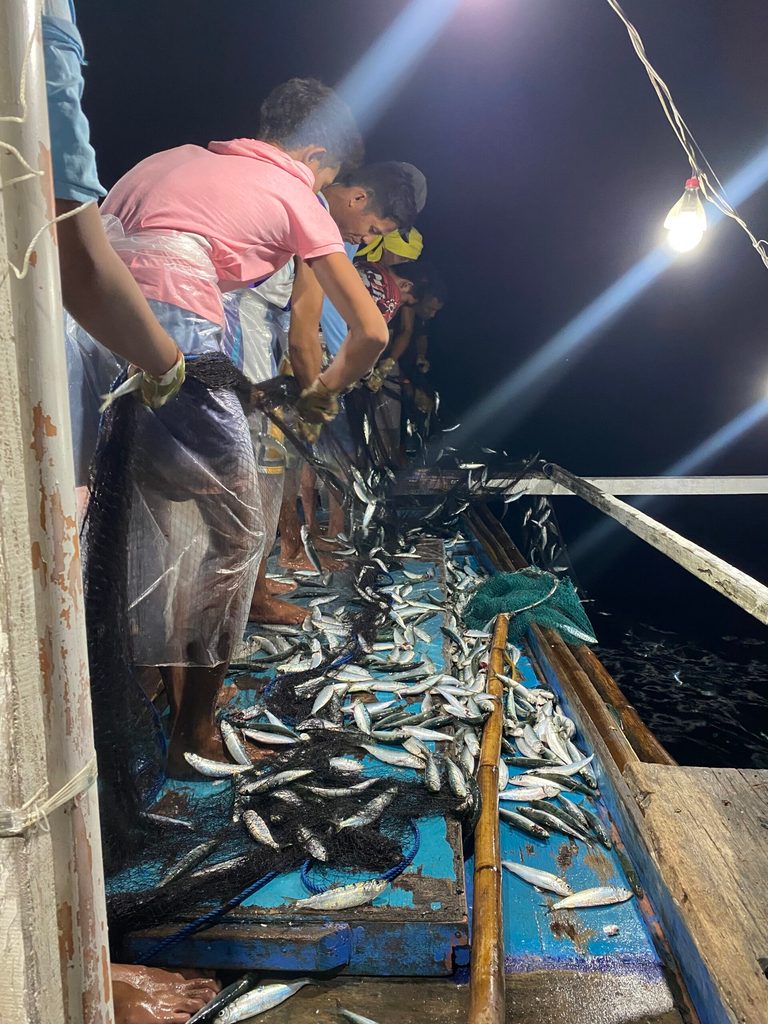
Just before midnight, with the whole net back on the boat, the crew ended up with around seven tubs or banyeras of sardines. Each banyera can carry around 55 kilograms, which meant their total yield that night was around 385 kilograms.
“Masayang-masaya [kami] at maraming huli. Kahit papaano, pag-uwi namin bukas sa aming barangay, sa bahay namin, may madadala kaming pasalubong,” said Bulan. (We are very happy to have caught a lot of fish. When we go home tomorrow, we’ll even have some to give away.)
The fishermen brought their catch to the port of Allen, a neighboring municipality, where they sold their catch to a commercial buyer for around P10,000. A third of this would go to the boat’s operational costs, with the rest split among the seven crew members.
One would think that a sardine-rich town would have many sardine fishers, but not so in San Vicente, according to its municipal agriculture officer, Merlyn Masdo.
It doesn’t help that sardine populations are dwindling due to overfishing, and there is a lack of communal, accessible cold storage facilities in the province’s coastal towns to help manage the stock.
Fimbriated sardines (tunsoy), for example, experienced a decrease in the period between July and September 2023, according to the fisheries situation report of the Philippine Statistics Authority.
Locals in Northern Samar fish within Fishery Management Area (FMA) 7, shared with those from Quezon, Camarines Sur, Albay, Sorsogon, Masbate, Samar, Biliran, and Leyte.
Need for support
Instead of local fishermen taking the most advantage of the sardines in their province, it is mostly crews from neighboring province Sorsogon that do so, Masdo said.
“We don’t have many local sardine fishers. Nonlocals would go all the way here. When they find out San Vicente has an abundant supply of sardines, fishermen from Bulan come here. Our practice is to make them pay for permits so that the municipality can earn money,” Masdo said in Filipino.
These “foreign” crews are still municipal fishers, Masdo said, as San Vicente is very strict against commercial fishers entering their municipal waters.
Commercial fishers are those who operate with fishing vessels of 3.1 gross tons up to more than 150 gross tons. Municipal fishers operate with vessels weighing less than 3.1 gross tons, and are given exclusive fishery privileges within the 15-kilometer municipal waters.
Local fishermen also lack advanced equipment meant to make the physically demanding but low-return work of sardine fishing more efficient.
“In sardines fishing, when the sardines are caught in the net, you have to remove them one by one. Not a lot of our local fishers have the drive for that,” Masdo said in a mix of Filipino and English.
Making sardine fishing sustainable
Sardines make up 15% of the total fish catch in the Philippines. It is a staple in many households, in relief packs during disasters, and a fixture in many Filipinos’ diets.
But even though there is still a relative abundance of sardines in the fishing grounds of San Vicente, catch has been deteriorating in recent years. Sardines caught are also getting smaller.
Rhea Yray-Frossard, campaign and research director of conservation group Oceana Philippines, said that a 2016 study commissioned by the group showed stocks in Northern Samar were already overfished. That was seven years ago.
When a fish stock is overfished, the population is not able to grow and spawn, increasing instances of catching more and more juveniles.
“There’s one finding that the small fish give birth prematurely. It’s because they need to keep up so they can replenish their stocks,” Yray-Frossard said in a mix of English and Filipino during a meeting of the San Bernardino LGU Alliance-Northern Samar (SABELANS), a coalition of municipal agriculture officers of the towns near the San Bernardino Strait.
The San Bernardino Strait is the body of water between Sorsogon and Northern Samar. It is one of the Philippines’ major fishing grounds for sardines, according to Oceana. Because the boundaries of the 15-kilometer municipal waters overlap among Northern Samar’s coastal towns, SABELANS serves as a coordination ground for policy creation.
Overfishing and increased juvenile catch are just a few of the problems identified in the government’s National Sardines Management Plan (NSMP). Through NSMP, the government wants to attain a more sustainable sardine fishing industry in the Philippines while making sure that fishers get higher income and the country’s food demands are met.
It hinges on the crux of the amended Fisheries Code: that the food needs of Filipinos is the overriding consideration in the use, management, development, conservation, and protection of fishery resources.
The plan, covering the period from 2020 to 2025, wants to spur a more sustainable management of sardine fisheries by regulating catch, specifically juvenile sardines, while making fishing more equitable and profitable for small-scale fishers.
Because fishing grounds transcend land territories of municipalities, the plan was designed to be integrated by each fishery management area (FMA). In 2019, the Bureau of Fisheries and Aquatic Resources issued Fisheries Administrative Order No. 263, establishing 12 FMAs in the country.
The plan’s implementation would largely rely on local governments, which are expected to come up with ordinances that tailor-fit the NSMP to the needs of their own sardine fisherfolk.
At the heart of it all are the fisherfolk, a sector that lives hand to mouth. The NSMP aims to reduce the poverty incidence of sardine fisherfolk by 5% by 2022. As of 2021, the fisherfolk still belong to one of the poorest sectors in the country, according to the Philippine Statistics Authority.
Catch-22 situation
In San Vicente, for example, a smattering of small fishers remains poor. Poverty and lack of financial credit available had long hindered fishers from investing in boats and better gears.
It’s a catch-22 situation: poor fishers can’t buy new equipment, and without new equipment, they can’t maximize livelihood and income.
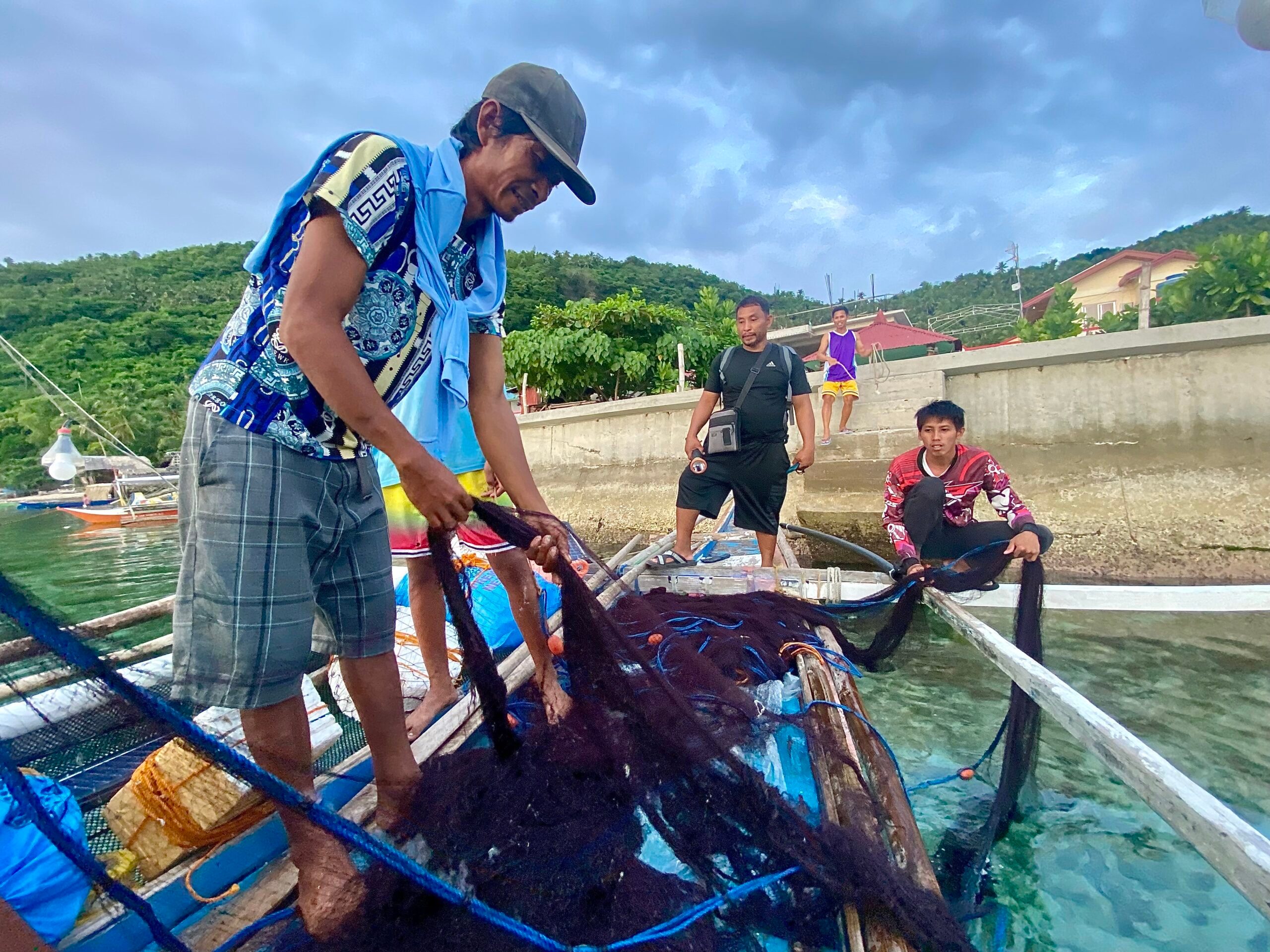
Richard Manaoag Garay, one of Bulan’s crew members, said wanting better gears had put them at a disadvantage against those with more resources. Because beyond the crews in their town, they had to contend with other fishers from different towns who use upgraded equipment.
“Sila, nanggagaling sila sa mga siyudad,” said Garay. “Eh kami dito, sa isla lang, kung ano’ng mayroong mga kagamitan.” (They come from the cities. Those of us from the island, we use only what we have.)
To uplift the lives of the fisherfolk, the government has been looking at making the industry more profitable through the expansion of allied industries like canning and bottling. During closed seasons – a short-term moratorium established to make fisheries more sustainable – fishers need other sources of income.
But in San Vicente, fishing remains the residents’ only major source of income, according to Mayor Edgar Catarungan.
“’Yan lang ‘yung source of income namin dito sa San Vicente,” said Catarungan. “Wala man kaming iba, island kami. Wala man ditong mga establishments, mga negosyo.” (That’s our only source of income here in San Vicente. We’re an island. We don’t have establishments, businesses.)
“Patay ‘yung San Vicente kung walang mangingisda,” he added. (San Vicente is dead if there are no fisherfolk.)
They also have to deal with limited funds in their town and a dependence on the national government for social welfare. Catarungan said they have been relying on the government’s conditional cash transfer program and various programs of the Department of Labor and Employment.
Despite having the NSMP, a sustainable and equitable sardines industry remains a lofty goal for San Vicente. But some initiatives are trying to make headway to make this possible. (To be concluded) – Rappler.com
NEXT: Life after catch: Sardines business holds promise for N. Samar small fishers
Add a comment
How does this make you feel?
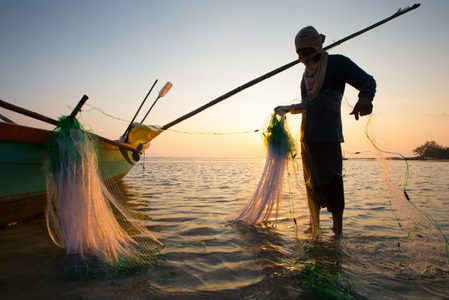















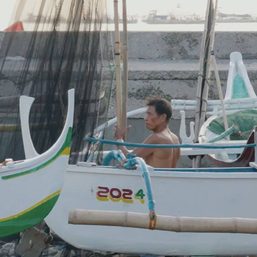
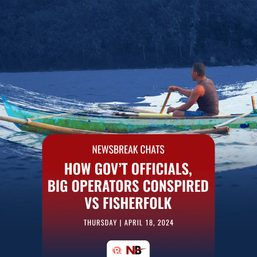
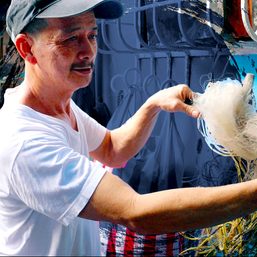
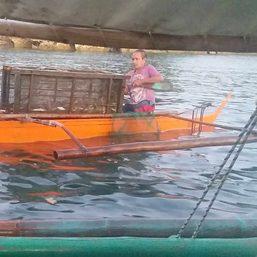
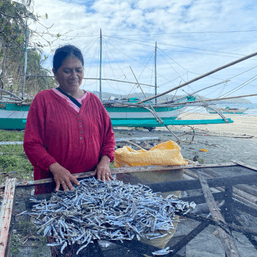







![[DOCUMENTARY] Our 15 kilometers: Small fishers fear losing municipal waters to big operators](https://www.rappler.com/tachyon/2023/12/our-15-kilometers-iuu-fishing-docu.jpg?resize=257%2C257&crop=279px%2C0px%2C720px%2C720px)





There are no comments yet. Add your comment to start the conversation.